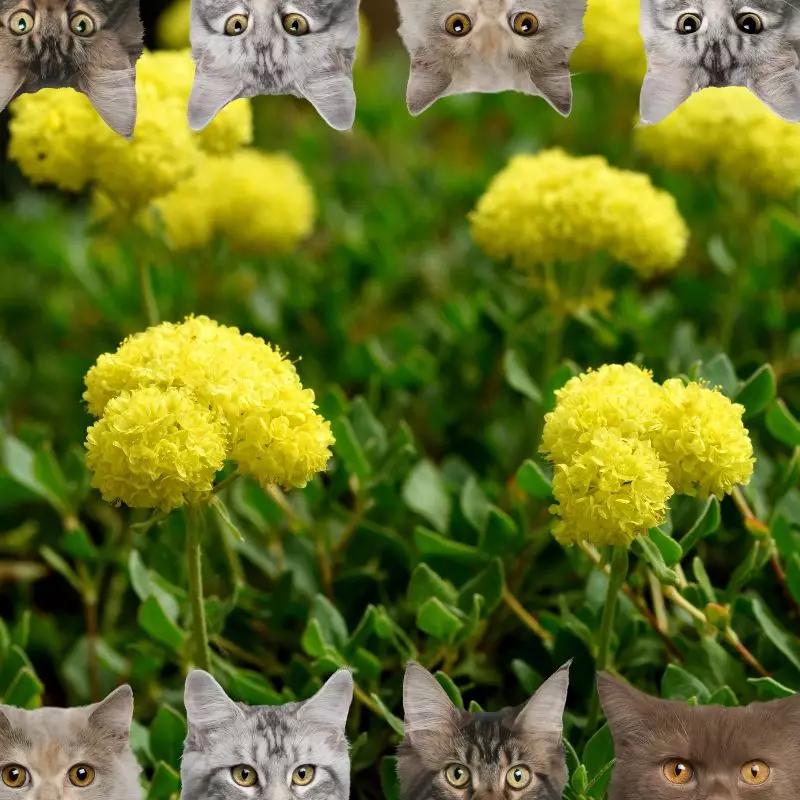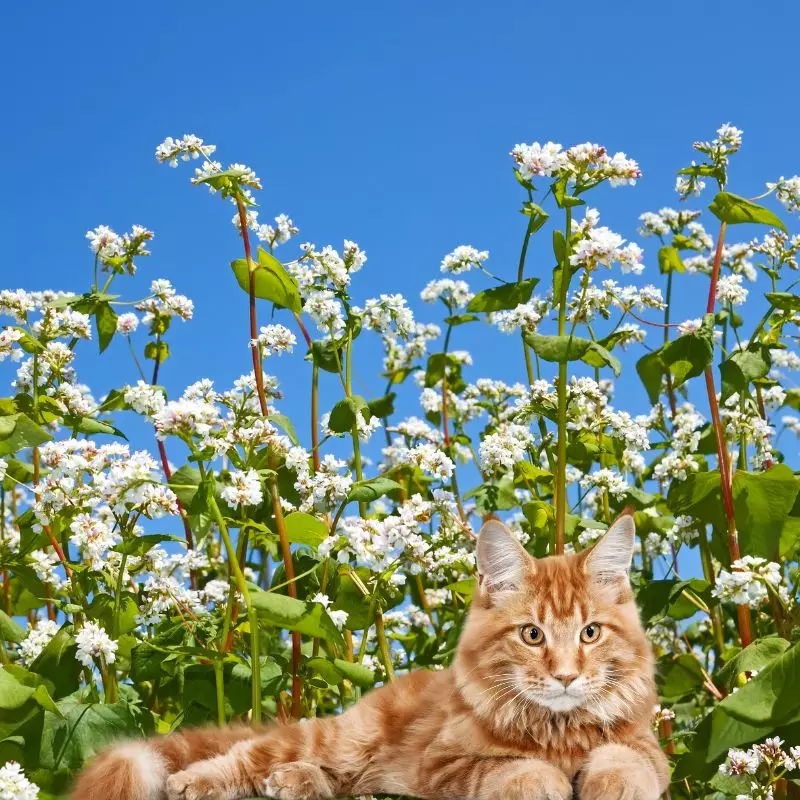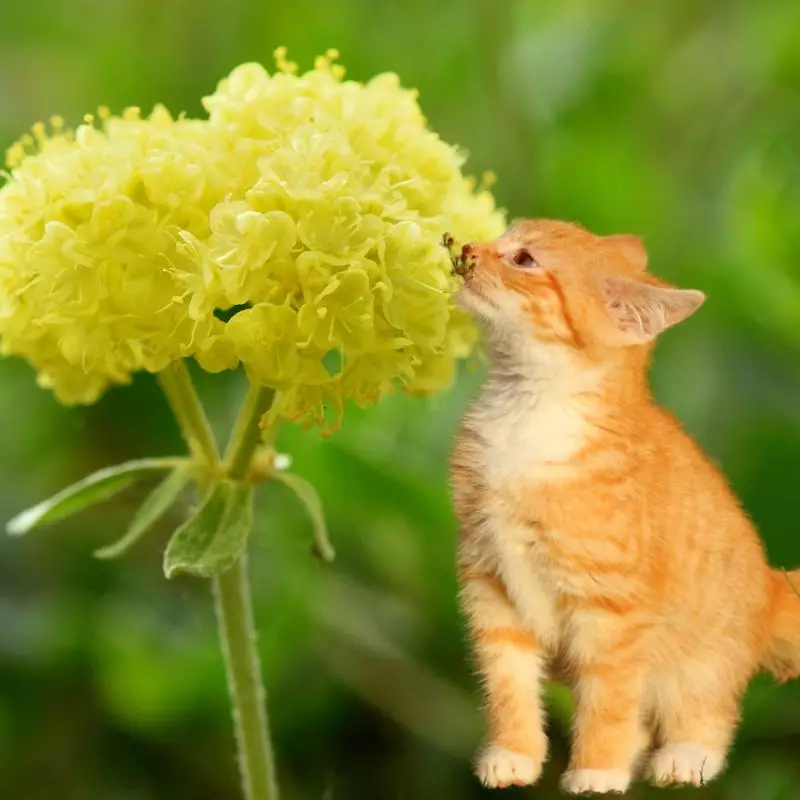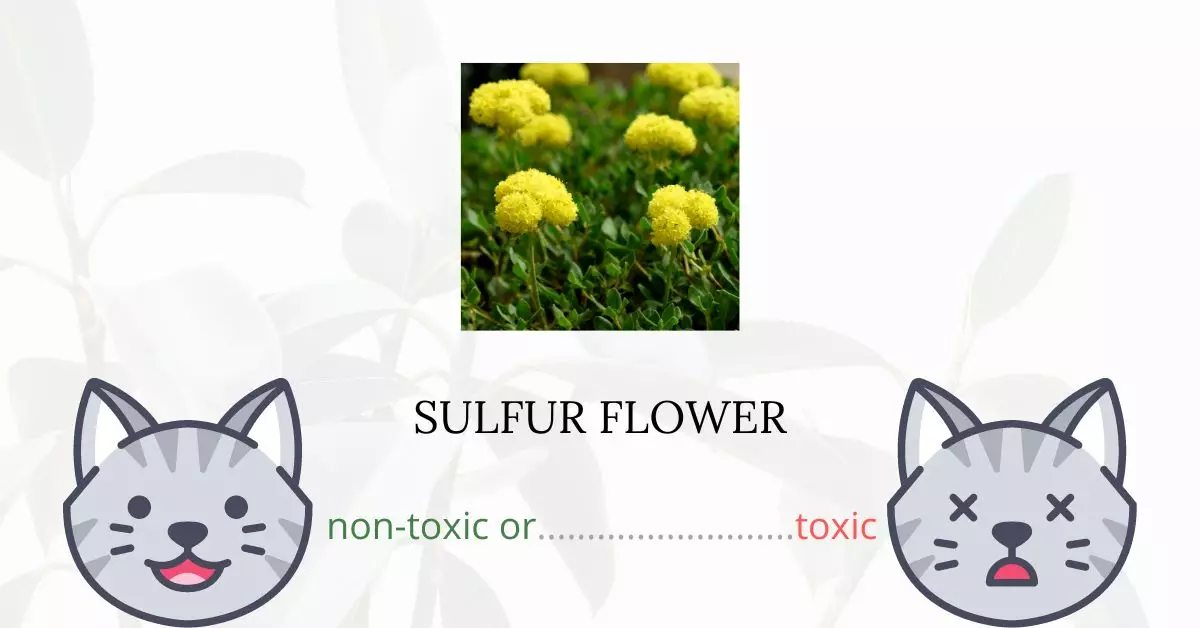The sulfur flower, also known as wild buckwheat, is not toxic to cats. This information is backed by reputable sources such as the ASPCA, which categorizes the sulfur flower as a non-toxic plant for felines, dogs, and horses. However, while it’s generally safe for cats, it’s not recommended to include the sulfur flower in a cat’s regular diet.
This article is crafted in collaboration with a team of experienced DVMs (doctors of veterinary medicine). Their insights and expertise, coupled with comprehensive research from high-authority websites like ASPCA and PetMD, ensure that we provide accurate and up-to-date information on the potential risks associated with various plants, including the Sulfur Flower, and their effects on cats.
Can Cats Eat Sulfur Flower or Wild Buckwheat?

The sulfur flower is safe for our feline friends but they should not eat this plant regularly. A small bite may not harm them, but excessive amounts can cause indigestion and other health issues.
Cats cannot fully digest plants because they are obligate carnivores. It means that they only feed on meals that are protein-based. They also do not fully benefit from plant nutrients due plant materials are not digested well.
A few cats may also experience allergic reactions though this depends on your cat. Sensitive cats tend to react differently to some plants.
Commercial pesticides, fertilizers, and other plant care products may contain toxic chemicals that can contaminate a plant. If a cat ingests a portion of a plant with toxic residues, it may suffer from intoxication.
What is a Sulfur Flower or Wild Buckwheat?

Native to western North America, the sulfur flower is a Polygonaceae plant that thrives in a variety of habitats, including the sagebrush steppe and alpine regions. It is a perennial that spreads and forms a mat and is known for its tiny, sulfur-yellow flowers that bloom from late spring into summer.
The plant can reach heights of 12 feet with low-growing basal mounds of leathery, spatula-shaped, gray-green leaves. Both a basal rosette below the main flower stalk and whorls at the tips of short woody stems emerging from the woody plant base have leaves on them.
The sulfur flowers change as they age from sulfur yellow to cream to orange-yellow. They eventually turn brown and look beautiful in dried arrangements. It is a great option for the landscape’s dry areas. Additionally, it is utilized as a ground cover in mounds, banks, slopes, and butterfly and rock gardens.
Keeping Cats Away From Sulfur Flower or Wild Buckwheat

Cats detest uneven terrain. They adore using smooth surfaces for digging and walking. Your plant beddings might be more cat-repellent if they are rough.
To make a surface that is uncomfortable to walk on, try laying chicken wire under mulch or burying it in the top layer of soil (with holes drilled for plants). You can use these items because cats will try their best to avoid areas covered in stones or pebbles.
To create a bristly barrier for cats without destroying the garden’s natural aesthetic, you could also try stuffing gaps around bedding with a collection of pine cones or branches.
Plants to Avoid For Your Cats
If you are a cat owner and unsure if the plants growing in your yard are harmful to your cats, check out this list of toxic plants for cats. You can also check our list of non-toxic plants for cats.





